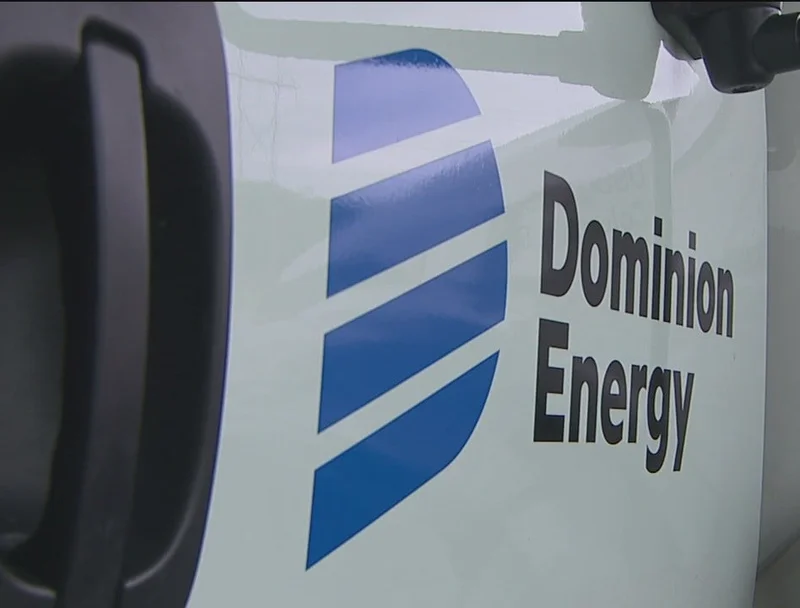I’ve spent my career watching the slow, often frustrating, crawl of progress. We see glimmers of the future, isolated breakthroughs that promise a new world but often get bogged down in politics, economics, or sheer inertia. But every once in a while, you see a signal in the noise—a convergence of events so powerful and so elegant that it feels like the future is arriving ahead of schedule. Right now, that signal is flashing brightly off the coast of Virginia.
Out there, 30 miles from Virginia Beach, something monumental is taking shape. I’m talking about the Coastal Virginia Offshore Wind (CVOW) project. When I read the update that all 176 massive turbine foundations were already installed, hammered into the seabed, I honestly just sat back in my chair, speechless. This is the kind of engineering feat that reminds me why I got into this field in the first place. This isn't a proposal or a plan; it's steel in the water. As a recent Canary Media headline declared, America’s biggest offshore wind farm will be online in six months.
This project is the very definition of a heavyweight. A 2.6-gigawatt behemoth that will serve as a powerful, centralized anchor for the region's energy needs. Think of it as the new heart of the grid, pumping colossal amounts of clean energy into the system. The speed at which this is happening, despite the political headwinds that have stalled other projects, is staggering. They navigated the narrow environmental window for construction, pile-driving nearly a hundred foundations in just five months, a pace aided by good weather and a quiet hurricane season. It’s a testament to what we can achieve when we commit.
But here’s what most people are missing. This gigantic project, this Goliath in the waves, is only half the story. And frankly, it’s the other half that has me truly electrified.
The Symphony of the Small
While the headlines focus on the towering turbines, Dominion Energy has quietly launched a second, parallel revolution. As one industry publication announced, Dominion issues RFP seeking solar, wind and storage PPAs. This is a masterclass in forward-thinking grid design. They're not just looking for more giant projects; they're actively seeking out a diverse portfolio of solar, onshore wind, and energy storage, from massive utility-scale farms down to tiny, distributed projects.

They're looking for distributed projects—in simpler terms, this means smaller-scale power sources like solar panels on a commercial warehouse roof or a carport at a shopping mall that feed power right back into the local network where it's needed most. This isn't just about adding more green megawatts; it's about fundamentally changing the topology of the grid itself. The sheer scope of the RFP is breathtaking—they're seeking utility-scale solar, distributed solar, solar co-located with storage, onshore wind, wind with storage, and standalone batteries, and they're even encouraging developers to build on previously developed sites like old landfills and industrial parks.
This is the big idea, the paradigm shift that so many have been talking about. If the offshore wind farm is the powerful new heart of the grid, then this RFP is the plan to build out the entire circulatory system. It’s the network of capillaries and arteries that will deliver energy with stunning efficiency and resilience. A massive, centralized power source like CVOW is incredible, but it's still a single point. By weaving in hundreds, maybe thousands, of smaller, decentralized energy sources, you create a system that is stronger, smarter, and far less fragile.
Think of it like the evolution of the internet. We started with massive, centralized mainframes, but the real revolution came with the development of a distributed network, where countless individual nodes could communicate and share the load. That’s what’s happening to our energy grid right now. This dual-track strategy—building the giant and simultaneously cultivating the small—is the blueprint. It creates a system that can not only handle the massive new demand from data centers and EVs but can also heal itself, balance loads locally, and reduce the strain on long-distance transmission lines.
Of course, with this incredible power comes an immense responsibility. How do we ensure that the benefits of this new energy economy—the jobs, the cleaner air, the lower costs—are distributed equitably? How do we make sure that communities that have historically borne the brunt of our fossil fuel past are the first to reap the rewards of this clean future? These aren't afterthoughts; they must be central questions in this incredible build-out.
But the sheer ambition is undeniable. We're witnessing a live-action experiment in building the 21st-century grid. And it’s not happening in a lab at MIT; it's happening in the real world, right now, in Virginia and North Carolina. What questions does this raise for the rest of the country? If a legacy utility can pivot this hard and this fast, what excuse does anyone else have?
The New Grid is Taking Shape
Let’s be clear. What we are seeing from Dominion isn't just an energy company adding renewables to its portfolio. It is the deliberate, concurrent construction of two complementary energy systems that represent the past and future of power generation. The massive, centralized offshore wind farm is the ultimate expression of 20th-century scale, while the call for distributed, localized solar and storage is the very essence of a 21st-century resilient network. It’s not one or the other; it’s both, working in concert. This is the blueprint. This is how you build a grid that is not only clean but also robust, intelligent, and truly prepared for the century ahead. The future isn't just coming; it's being built, foundation by foundation, panel by panel.

